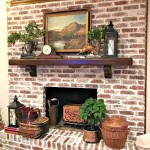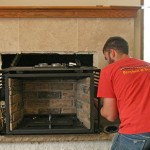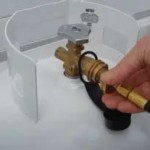How To Clean Your Brick Fireplace
A brick fireplace serves as a focal point in many homes, providing warmth and ambiance. However, regular use leads to the accumulation of soot, ash, and creosote, diminishing its aesthetic appeal and potentially posing safety hazards. Maintaining a clean fireplace is crucial for both its longevity and the safety of the inhabitants. This article provides a comprehensive guide on effectively cleaning a brick fireplace, outlining the necessary tools, preparation steps, and cleaning techniques.
Preparation and Safety Measures
Before commencing the cleaning process, thorough preparation is essential to ensure personal safety and protect surrounding areas. Gathering the required materials and taking necessary precautions will streamline the task and minimize potential risks.
Gathering Essential Supplies: The following tools and cleaning agents are typically needed for cleaning a brick fireplace:
- Drop cloths or plastic sheeting: To protect the flooring around the fireplace from stains and debris.
- Stiff-bristled brush: For scrubbing the brick surface and removing loose soot and ash. A wire brush can be used for particularly stubborn stains, but caution should be exercised to avoid damaging the brick.
- Vacuum cleaner with a hose attachment: To remove loose debris and dust after brushing. A shop vacuum is recommended due to its ability to handle larger debris.
- Spray bottle: For applying cleaning solutions.
- Buckets: For holding water and cleaning solutions.
- Sponges and rags: For wiping down the brick surface.
- Protective gear: Including gloves, eye protection (goggles), and a dust mask to protect against irritants and potential health hazards.
- Cleaning solutions: A variety of options are available, ranging from homemade solutions to commercially available fireplace cleaners. Options include:
- Dish soap and water: A mild solution suitable for general cleaning.
- Baking soda and water paste: Effective for removing soot stains.
- Vinegar and water solution: A natural cleaning agent that can help dissolve mineral deposits.
- Commercial fireplace cleaners: Formulated specifically for removing soot and creosote. Ensure to follow the manufacturer's instructions carefully.
Preparing the Fireplace Area: Prepare the area surrounding the fireplace by removing any furniture, rugs, or decorative items. Cover the floor with drop cloths or plastic sheeting to prevent stains and protect it from debris. Ensure adequate ventilation by opening windows or doors. This will help to dissipate any fumes from cleaning solutions and reduce the risk of respiratory irritation.
Safety Precautions: Prioritize personal safety by wearing gloves to protect the hands from harsh chemicals and abrasive surfaces. Eye protection, such as goggles, prevents soot and cleaning solutions from entering the eyes. A dust mask is crucial to filter out fine particles and protect the respiratory system from irritation. Before using any cleaning solution, test it on a small, inconspicuous area of the brick to ensure it does not cause discoloration or damage.
Cleaning the Fireplace Interior
The interior of the fireplace, including the firebox and the flue, requires specific cleaning techniques due to the heavy accumulation of soot and creosote. Neglecting this area can lead to reduced efficiency and increased fire risk.
Removing Loose Debris: Begin by removing any remaining ashes and debris from the firebox. Use a shovel or scoop to collect the bulk of the ash and dispose of it in a metal container with a tight-fitting lid. Avoid using a regular vacuum cleaner for this task, as the fine ash particles can clog the filter and damage the motor. Once the majority of the ash is removed, use a shop vacuum with a hose attachment to clean the remaining debris from the firebox and surrounding areas. Pay close attention to corners and crevices where ash tends to accumulate.
Cleaning the Firebox: After removing loose debris, the firebox surfaces can be cleaned using a cleaning solution. Start with a mild solution of dish soap and water. Apply the solution to the brick surface using a sponge or brush and scrub gently to remove soot and grime. For stubborn stains, a baking soda paste can be applied. Mix baking soda with water to form a thick paste and apply it to the stained areas. Allow the paste to sit for 15-20 minutes before scrubbing with a stiff-bristled brush. Rinse thoroughly with clean water and dry with a clean rag. If using a commercial fireplace cleaner, follow the manufacturer’s instructions carefully, ensuring proper ventilation and protective gear.
Cleaning the Flue: The flue, or chimney, is a critical component of the fireplace system and requires professional cleaning to remove creosote buildup. Creosote is a highly flammable substance that accumulates as a byproduct of burning wood. Regular chimney sweeping is essential to prevent chimney fires. It is recommended to hire a certified chimney sweep to inspect and clean the flue at least once a year. Chimney sweeps have the necessary tools and expertise to safely and effectively remove creosote and other debris from the flue. Attempting to clean the flue without proper training and equipment can be dangerous and ineffective.
Cleaning the Brick Exterior
The exterior brickwork is also susceptible to staining and discoloration from soot, smoke, and other environmental factors. Regular cleaning will maintain its appearance and prevent permanent damage. The method employed will depend on the nature and severity of the staining.
Dusting and Vacuuming: Begin by removing loose dust and debris from the brick surface with a soft brush or a vacuum cleaner with a brush attachment. This will prevent dirt and debris from being ground into the brick during the cleaning process. Pay attention to crevices and grout lines where dust tends to accumulate.
Applying Cleaning Solutions: For general cleaning, a solution of dish soap and warm water is usually sufficient. Mix a small amount of dish soap with warm water in a bucket. Dip a sponge or brush into the solution and scrub the brick surface gently. For more stubborn stains, consider using a stronger cleaning solution, such as a mixture of vinegar and water (1:1 ratio) or a commercially available brick cleaner. Before applying any cleaning solution, test it on a small, inconspicuous area of the brick to ensure it does not cause discoloration or damage. Apply the solution to the brick surface using a spray bottle or sponge. Allow it to sit for a few minutes to loosen the dirt and grime.
Scrubbing and Rinsing: Use a stiff-bristled brush to scrub the brick surface, paying particular attention to stained areas and grout lines. Apply firm, even pressure to remove dirt and grime. For particularly stubborn stains, a wire brush can be used, but exercise caution to avoid scratching or damaging the brick. Rinse the brick surface thoroughly with clean water to remove any remaining cleaning solution. Use a sponge or clean rag to wipe down the surface and remove any excess water. Allow the brick to air dry completely.
Addressing Specific Stains
Different types of stains require specific treatment methods. Identifying the type of stain is crucial for selecting the appropriate cleaning technique.
Soot Stains: Soot stains are a common occurrence on brick fireplaces and are caused by the incomplete combustion of wood. A baking soda paste is often effective for removing soot stains. Mix baking soda with water to form a thick paste and apply it to the stained areas. Allow the paste to sit for 15-20 minutes before scrubbing with a stiff-bristled brush. Rinse thoroughly with clean water and dry with a clean rag. For more stubborn soot stains, a commercial fireplace cleaner may be necessary.
Rust Stains: Rust stains can occur if metal objects are placed near the fireplace or if water comes into contact with iron-containing materials on the brick. To remove rust stains, mix lemon juice or white vinegar with salt to form a paste. Apply the paste to the stained area and let it sit for several hours or overnight. Scrub the area with a stiff-bristled brush and rinse thoroughly with clean water. Repeat the process if necessary. Commercial rust removers are also available, but be sure to follow the manufacturer's instructions carefully.
Efflorescence: Efflorescence is a white, powdery deposit that can appear on brick surfaces due to the migration of salts to the surface. To remove efflorescence, brush the affected area with a stiff-bristled brush to remove the loose powder. Then, wash the area with a solution of water and muriatic acid (hydrochloric acid). Muriatic acid is a strong acid and should be handled with extreme caution. Wear gloves, eye protection, and a respirator when using muriatic acid. Follow the manufacturer's instructions carefully. After washing with muriatic acid, rinse the area thoroughly with clean water to remove any remaining acid residue.

How To Clean Fireplace Bricks 9 Steps With S Wikihow

How To Clean A Fireplace Diy Basics

Best Way To Clean A Fireplace Stacy Risenmay

How To Clean A Brick Fireplace The Family Handyman

How To Clean Brick Fireplaces Mantels Hearths And More My Space

How To Clean Fireplace Bricks Simple Practical Beautiful

Fireplace Cleaning Tutorial Kippi At Home

How To Clean A Fireplace Diy Basics

How To Clean A Brick Fireplace With Scrubbing Bubbles 2024 Today S Homeowner

How To Clean Fireplace Bricks
Related Posts








